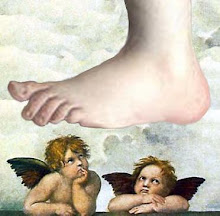Ingrown toenails
An ingrown toenail (onychocryptosis) occurs when part of the nail pierces the soft tissue at the side of the nail. As the nail grows the spicule becomes embedded further in the flesh of the nail fold.
An ingrown toenail
Causes
· Poor nail cutting technique may leave a sharp spike or corner of the nail. Trimming too far down the sides is a common cause of an ingrown toe nail.
· Nail shape- some people are predisposed to getting recurrent ingrowing toenails due to the shape of their nail. a nail that is more curved from side to side rather than being flat is more likely to become an ingrown nail.
· Footwear that is tighter is more likely to increase pressure between the skin in the nail fold and nail, increasing the risk on an ingrown nail.
· Trauma to the nail may alter the shape of the nail, making it more prone to becoming ingrown
· A fleshy toe is more likely to have a nail grow into it. Those whose feet swell are a lot are more prone to having this happen
Signs and Symptoms
Acute inflammation of the surrounding soft tissues occurs, the skin becomes red, shiny and the toe becomes swollen. There is a throbbing pain and the toe is very sensitive to pressure. If the nail continues to in grow, excessive granulation tissue (proud flesh) may form on the side of the nail. The wound can easily become infected where it increases in redness, heat, swelling, and tenderness and develops pus.
Treatment
Self Treatment
At home you should bathe the wound in salt water after showering and dress daily with Betadine and a band aid until you are able to seek help from your podiatrist. If an infection sets in antibiotic treatment must be sought from your GP.
Conservative Treatment
If the toenail is only mildly ingrown in the early stages the nail may be cleared painlessly by trimming it with nail nippers.
Nail Surgery (Source: American Academy of Family Physicians)
Surgical Treatment
If conservative treatment is not possible then nail surgery will be needed to remove the nail spicule. Initially a partial nail avulsion will remove a section of the entire offending border to the matrix under local anaesthetic. This can be done here in the clinic.
If the nail recurrently becomes ingrown then a partial nail avulsion with matrix phenolisation may be performed. In this procedure, part of the nail is removed and the root killed with a caustic substance (phenol) so it cannot regrow in the problem area. The likelihood of the ingrown nail returning is very low after this procedure.
Please note that this information is not to be used as a substitute for the advice of a health professional
Please note that this information is not to be used as a substitute for the advice of a health professional



